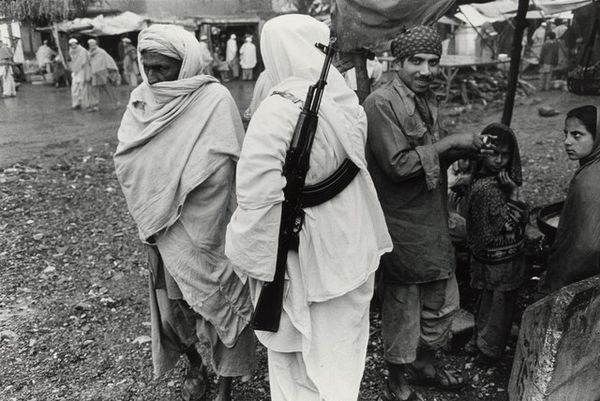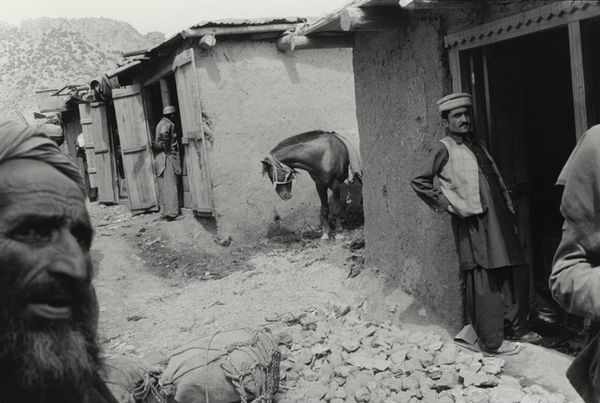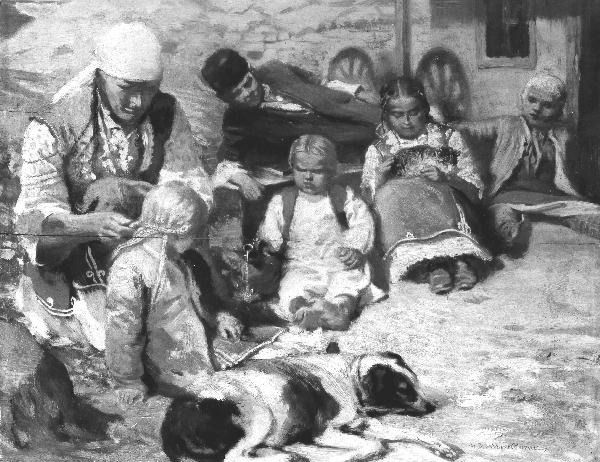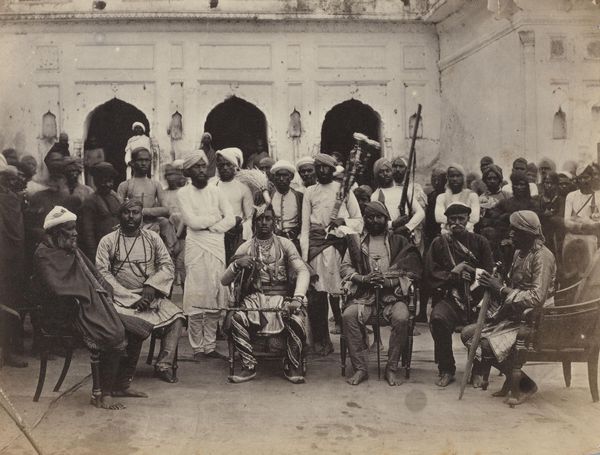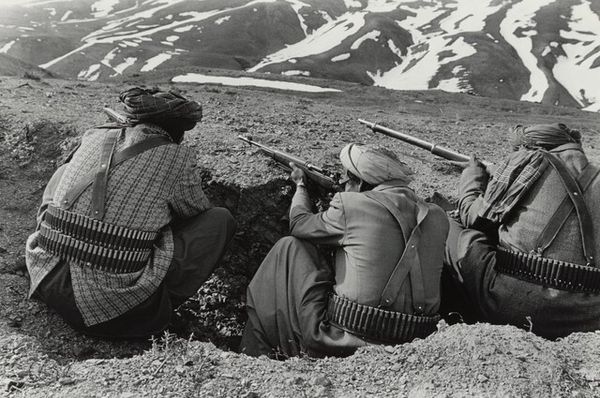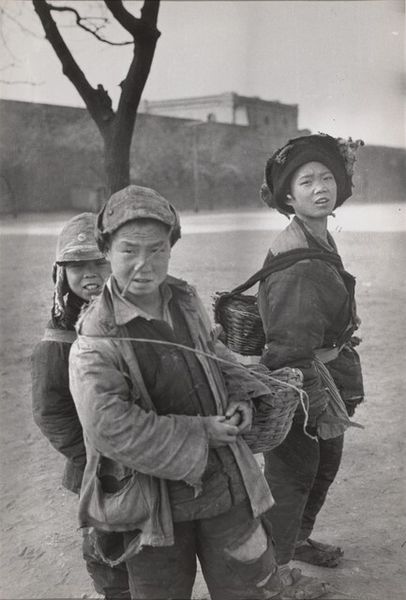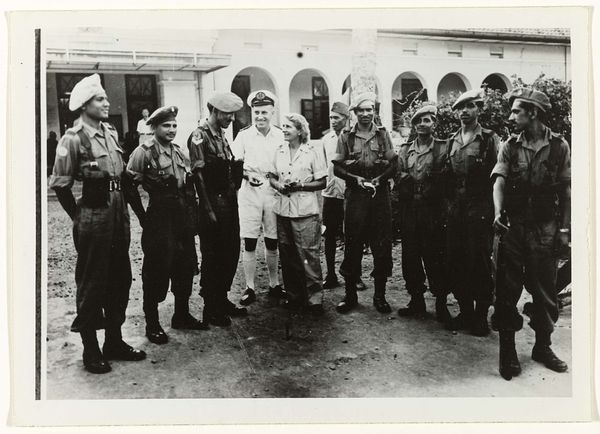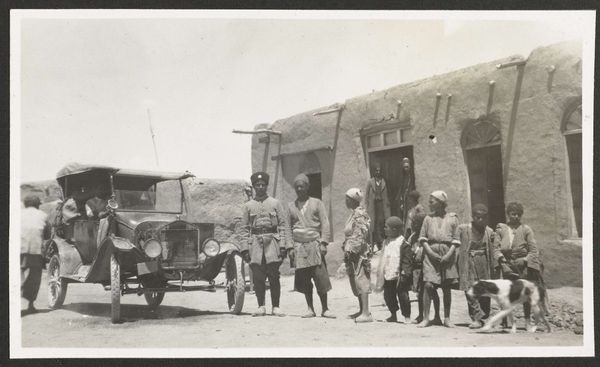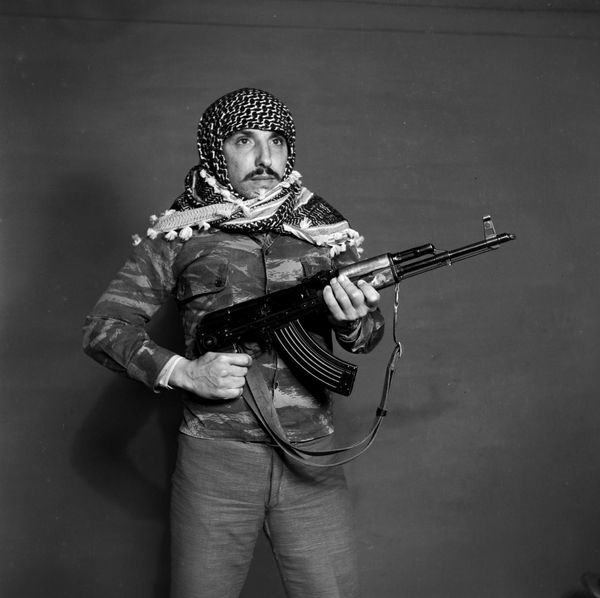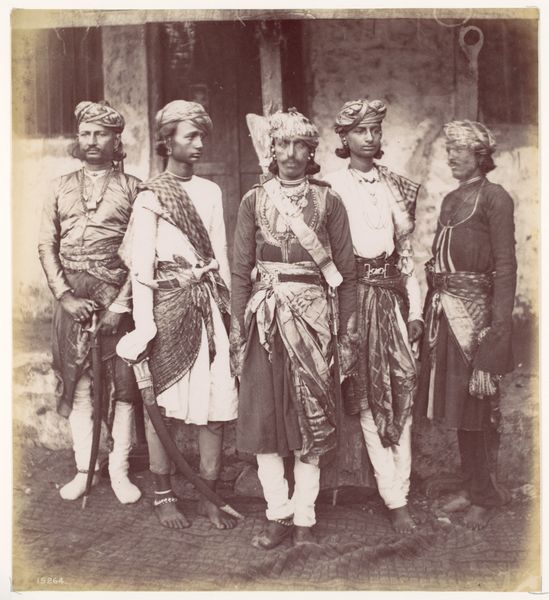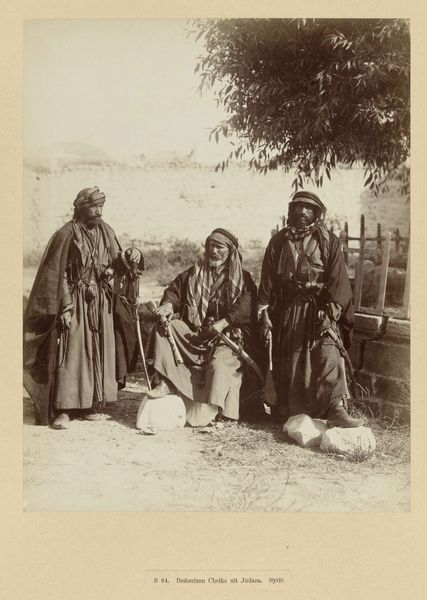
photography
#
portrait
#
black and white photography
#
portrait image
#
street-photography
#
photography
#
photojournalism
#
group-portraits
#
black and white
#
monochrome photography
Dimensions: image: 26.5 × 39.5 cm (10 7/16 × 15 9/16 in.) sheet: 35.56 × 43.18 cm (14 × 17 in.)
Copyright: National Gallery of Art: CC0 1.0
Curator: The image before us, Ed Grazda’s "Mujahideen at Wageeza, Afghanistan," dates back to 1983 and offers a stark, unfiltered glimpse into a moment of conflict. Editor: There’s an immediate tension here. The subjects are framed rigidly, shoulder to shoulder. Their dark eyes are unwavering, almost confrontational against the grainy monochrome. Curator: Indeed. Grazda captured this photograph during a period of intense political upheaval in Afghanistan. Soviet forces had invaded, and the Mujahideen were fighting to expel them, sparking a war that drew in international actors and reshaped the region. This photograph provides a window into understanding resistance. Editor: It is an exceptional study in textures, though. The roughness of the wall contrasts beautifully with the soft folds of their clothing. Then you have the hard, glinting metal of the rifles cutting across it all, which emphasizes this interplay and heightens the image’s gravity. Curator: Note also the man peering from behind the door in the background; such visual layering offers deeper meaning here. His presence serves almost as an endorsement. The inscription, or rather graffiti, above the doorway is another indication of the backdrop and an explicit reference to place at this time. Editor: Semiotically speaking, the guns tell a crucial part of the story. These weapons, specifically AK-47s, became synonymous with resistance. They pierce the serenity usually associated with portraiture. Curator: What interests me most is how this photo engages in the larger narrative of Cold War politics. It is through images such as this, that awareness grew. Photography assumed the role of advocacy during times of unrest. Editor: I observe that the photographer opted for a flattened depth of field and even lighting, bringing forward fine details. Each face distinct. Each garment unique. In doing so, Grazda allows no space for romanticizing war. Curator: A key thing to consider is photojournalism's complicated dance with ethical questions in conflict zones. How does one frame violence without glorifying it? I believe Grazda succeeded through an image of unwavering fighters without indulging in any action or sentiment. Editor: Yes, it’s an incredibly composed moment frozen in time, a potent testament rendered in stark greyscale, offering us pause. Curator: Thank you, that concludes our analysis, leaving room for all to observe, perceive, and reflect.
Comments
No comments
Be the first to comment and join the conversation on the ultimate creative platform.
